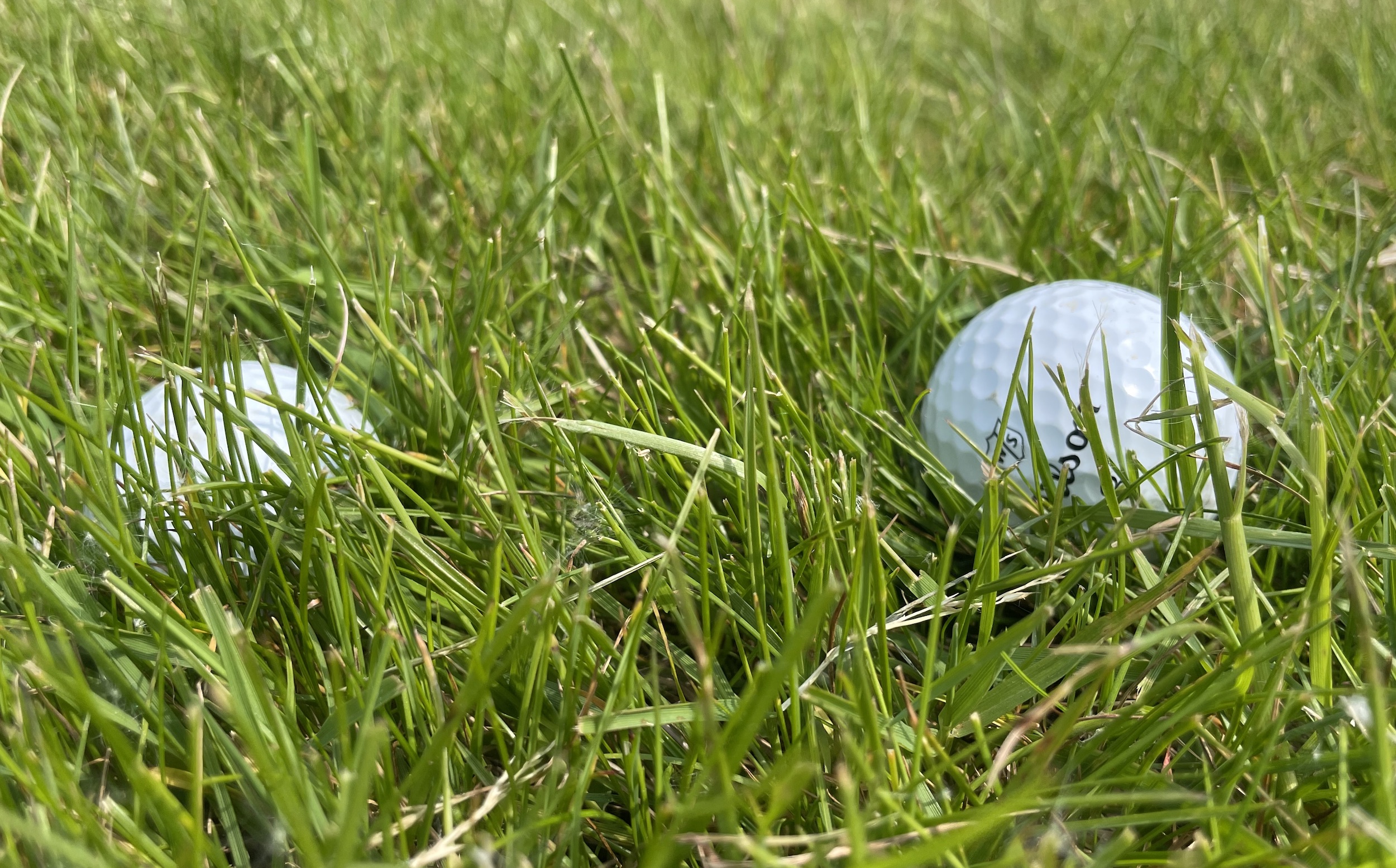What Is A Flyer Lie In Golf?
You've heard the expression countless times, but do you know exactly what causes a "flyer" and how to play the shot?


What Is A Flyer Lie In Golf?
A “flyer lie” is something that all golfers will have had on countless occasions yet many will not know how to recognise one. We hear the expression used a lot on televised golf tournaments when a ball sails through the back of the green and the commentator will ruefully remark “oh he must have caught a flyer out of that rough”. But what exactly is a flyer, how do you recognise when you have one and how should you then play the shot?
When a golf ball lands in the short or medium rough there are a number of ways it can lie. It might sit down deep or it might be nestling nicely on top of the grass. Maybe it’s somewhere between the two. How the ball is sitting in the grass determines how it will come out and informs you as to the type of shot you need to play for maximum effectiveness.
A ball hit out of any length of rough performs very differently to one played from the fairway. When you hit a shot from the fairway or off a tee, the ball rolls up the face of the club and the grooves will impart backspin, causing your ball to stop quickly when it lands.
If grass is trapped between ball and club face you will lose that traction and resulting backspin, causing your ball to come off the face hot and then run on considerably after landing. This is known as a "flyer" and it most commonly occurs when hitting out of short or medium length rough.
Playing shots from thick rough, or with a particularly bad lie in the medium stuff, there will usually be a lot grass between the club face and the ball, meaning that unless you have exceptional club head speed then your club may be slowed down too much for the ball to come out hot. In fact, it might not come out at all. We’ve all experienced that.

Identifying a flyer lie can be tricky but it will become easier with experience. Try to make a mental note of how your ball lies and then pay attention to how it comes out. This will stand you in good stead for the next time it happens. It is never an exact science though and much of it is educated guesswork. Not even the tour pros and their caddies get it right every time and there is always some degree of uncertainty when hitting out of the rough.
Subscribe to the Golf Monthly newsletter to stay up to date with all the latest tour news, equipment news, reviews, head-to-heads and buyer’s guides from our team of experienced experts.
When will the ball fly?
Generally, if your ball is sitting quite low and surrounded by short or medium length rough then you have a flyer. Similarly, if you think you can get your club through slightly longer rough (such as the dry, yellowish stuff you might find in the summer months) with a normal, unimpeded swing without losing any club speed, then the ball is likely to fly then too.
Another factor to be considered is the direction of the grass in relation to your club path. If the grain of the grass is pointing in the same direction as the shot you want to play, you will want to go with less club as the ball is going to fly due to the grass helping the club glide through it and gather speed.
Flyers are also more common when the grass is wet and this is why you will often see tour pros wiping their club face with a towel immediately before hitting a shot, even from the fairway.

A ball is likely to fly from dry, wispy grass
When will it not fly?
If the ball is sitting up on top of the short rough and you can pick it cleanly without grass getting between ball and club face, that is not going to be a flyer. If your ball is deep down in thick rough then that won't fly either.
In that situation, don’t be a hero, take your medicine and just advance it as far as you can with a higher lofted club. Unless of course you have tour pro speed and can muscle it out of there like Bryson DeChambeau when he won the US Open at Winged Foot. You probably don't though, so keep that in mind.
If the grain of the grass is running opposite to your target then your club is more likely to get caught up in the grass and you should consider just taking a higher lofted club and getting the ball back in play rather than attempting the “Hollywood Shot” and leaving your ball in the thick stuff.

Don't expect a flyer when playing from very thick lies
How does a flyer lie effect club selection?
Many golfers will have been told that you need to take less club from a flyer lie, but that isn’t always true. With a five iron or longer you may lose distance rather than gain it, so clubbing up might be wiser in some situations. In fact, anything longer than a six iron should probably be avoided as a hybrid or fairway wood will yield much better results for most average golfers.
The loft of a club has a big say on how the ball will come out of a flyer lie. As the grass prevents the interaction between ball and grooves the ball slides further up the face of the club than usual, and the higher the loft, the more the ball will slide up the face.
This means a flyer lie will have a different effect on a short iron shot than a long iron shot. On a longer iron the spin rate drops but the launch angle will not change, which often causes the ball to drop out of the sky earlier than normal. With the shorter irons the spin rate also drops but the launch is higher, meaning the ball travels further and will then run on after landing because it has no backspin to stop it.
Knowing all of this will help you understand how your ball is likely to react to the different lies you will encounter any time you stray from the fairway.

Grass trapped between club and ball at impact causes a flyer
How do you play shots out of a flyer lie?
If you have determined that your lie is likely to cause the ball to jump off the face and you are in mid-short iron range, then to play the shot correctly you will need to come down a club or maybe even two. You will not be able to stop the ball so you need to land it shorter and run it up the green.
Either take one club less, go down the grip a little and make a three quarter swing, or take two clubs less and hit a normal shot. The one thing you absolutely should not do is play the shot with the same club you would from the fairway.
The most important thing is to look at where the danger is and avoid the big miss. If your stock carry distance for a six iron is 160 yards and you have a similar number to the pin, from a flyer lie you are probably going to airmail the green with that six iron. Even a seven iron might be too much club, especially in dry and fast conditions when the ball will bounce hard and run more.
Play smart. Take the option that best minimises the risks even if you think you might not get all the way to the flag. There is usually far more trouble through the back of a green than there is short of it and therein lies the danger with a flyer lie.
The main thing to take from this though is that flyers are not to be feared and in fact they can be a lot of fun. When you know how your ball is likely to react and you select your club accordingly, there’s something extremely satisfying about blasting an eight iron out of the rough and seeing it go like a rocket and chase all the way up onto the green.
Dave is a distinctly average golfer, an avid collector of vintage Ping putters and the world's biggest Payne Stewart fan.
Dave’s lowest round is a one over par 73 around Kirkby Valley Golf Club in 2018, which included a bogey on the 18th to ruin the one and only chance he’ll ever have of shooting an even par or better score. That errant tee shot on 18 does not still haunt him to this day though, in fact he hardly ever thinks about it. No, honestly, he doesn’t. Not at all. Never.
Dave’s current What’s In The Bag?
Driver: Wilson Staff Dynapower
3 wood: Cobra Speedzone
5 wood: Tour Edge Exotics 722
7 wood: Callaway Mavrik Max
Irons: Cobra Darkspeed, 6-PW
Wedges: Cleveland CBX ZipCore, 48°, 52°, 56°
Putter: Ping PLD Oslo 3
Ball: TaylorMade Tour Response Stripe
